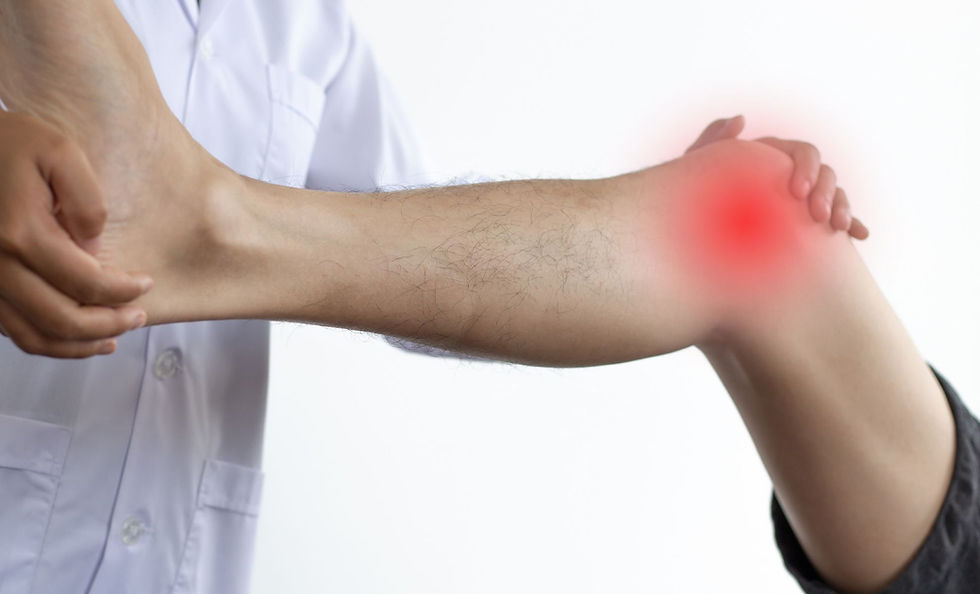What is Hypermobility Syndrome and How Osteopathy Can Help
- Dr. George Cheriyan, DO

- Jul 29
- 3 min read
Have you ever been told you're "double-jointed" or noticed that your joints bend more than most people’s? While flexibility is often seen as a positive trait, excessive joint mobility can sometimes come with a cost. This condition is known as Hypermobility Syndrome, and for some individuals, it leads to chronic pain, joint instability, fatigue, and other complications.
At 360 Osteopathic, we see many patients who struggle with the effects of hypermobility—and we want you to know, you’re not alone, and there are effective ways to manage it.
🦴 What is Hypermobility Syndrome?
Hypermobility Syndrome refers to a condition where joints move beyond their normal range of motion. This can be due to genetic factors affecting the connective tissues—particularly collagen—making ligaments looser and less supportive.
While some people with hypermobility have no symptoms, others experience:
Joint pain or frequent injuries
Muscle fatigue or stiffness
Dislocations or “clicking” joints
Poor posture or coordination
Digestive issues and fatigue (in more systemic forms like Ehlers-Danlos Syndrome)
This condition is more than just being flexible—it’s about the instability and stress it places on the musculoskeletal system over time.

🩺 How Osteopathy Can Help
Osteopathy is a hands-on, whole-body approach to health that focuses on restoring movement, reducing pain, and supporting the body's natural healing abilities. For patients with hypermobility, osteopathic treatment is especially beneficial because it:
✅ 1. Reduces Pain and Muscle Tension
Hypermobility often leads to overworked muscles as they compensate for joint laxity. Osteopaths use gentle techniques such as soft tissue massage, myofascial release, and trigger point therapy to relieve muscle tightness and discomfort.
✅ 2. Improves Joint Stability
Through careful joint mobilization, postural correction, and tailored exercise plans, osteopathy helps improve muscular control and coordination—key elements in stabilizing overly mobile joints.
✅ 3. Addresses Whole-Body Mechanics
Hypermobility doesn’t just affect one joint; it often causes widespread imbalances. Osteopaths take a whole-body approach, treating not just the painful areas but the underlying patterns contributing to your discomfort.
✅ 4. Provides Movement and Lifestyle Guidance
We work with you to identify which movements or activities may aggravate symptoms and provide adaptations or strengthening routines to help you move safely and confidently.
✅ 5. Collaborates with Other Specialists
In complex cases, osteopaths often work alongside GPs, rheumatologists, physiotherapists, or nutritionists to provide holistic, multidisciplinary care.
💬 What to Expect at 360 Osteopathic
At 360 Osteopathic, we begin with a thorough assessment of your medical history, joint mobility, posture, and movement patterns. Our treatment plans are tailored specifically to your body and needs—always working at a pace that feels comfortable for you.
We believe in empowering you with the tools, exercises, and understanding you need to manage your condition and improve your quality of life.
🧘♀️ Life with Hypermobility Can Be Better
Hypermobility Syndrome doesn’t have to mean living with chronic discomfort. With the right support, many people with hypermobility can enjoy active, pain-free lives. Osteopathy offers a gentle, effective way to manage symptoms, build resilience, and take control of your body again.
📍 Ready to Feel More Stable and Supported?
If you think you may have hypermobility or have already been diagnosed, we’re here to help. Book an appointment with one of our experienced osteopaths at 360 Osteopathic and let’s work together to get you moving better, with less pain and more confidence.



